The marquee event from the inaugural Baja California Culinary Fest convened behind El Trompo, a children’s museum in an outlying Tijuana neighborhood named for a spinning top. Several top restaurants from the region served food as live music filled the massive courtyard, and members of our culinary tour group packed their stomachs with stall finds.

Casa Plascencia, the Spanish restaurant from Baja culinary star Javier Plascencia, filled tacos with boneless beef cheek (cachete de res) and lamb (barbacoa). Condiments included onion, cilantro and two salsas: smoky chile de arbol, and tangy, spicy tomatillo serrano jalapeno.
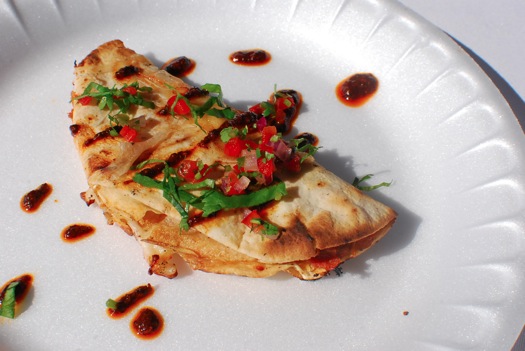
La Querencia/El Taller, home to notable Tijuana chef Miguel Angel Guerrero, contributed dishes like tacos de marlin, filling crispy tortillas with shredded, smoked fish and mozzarella before topping the tacos with tomato, cilantro and and chile de arbol.
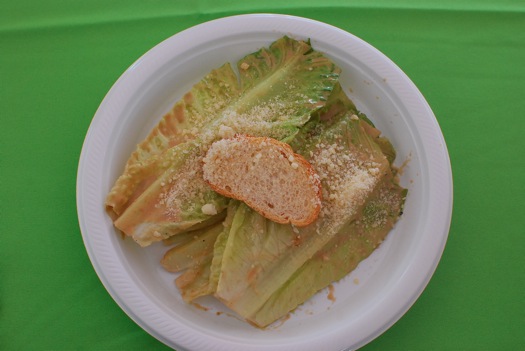
Plascencia, the primary organizer of the culinary fest, had a big presence at the main event. One of his most recent concepts, Cebicheria Erizo, featured seafood options like a shrimp tostada with tomatillo salsa. He’s also the latest owner of Caesar’s, which invented the Caesar salad in town. They mixed their salads to order in a wood bowl. That ensured that the salad arrived well dressed, with crisp romaine lettuce and crunchy crostini.
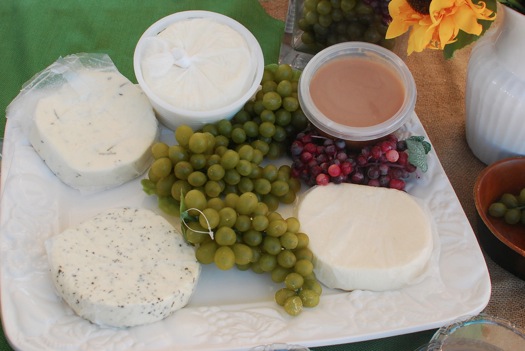
Quesos Sta. Brigida was a relative unknown, open for five years, from a family that’s been making cheese for 45 years. They served samples of a tantalizing quesadilla folded with three types of queso fresco: herbed, tomato and plain. The family also topped ricotta with chipotle and raspberry sauce, and sold wheels of cheese to go.
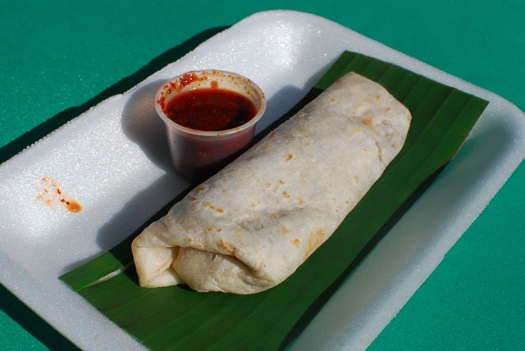
Bol Corona is a Tijuana burrito institution that dates to 1934. In the U.S., we’ve become accustomed to bulging burritos, but their burritos (35 peso) are tightly packed. They filled my pick with machaca, refried beans, and griddled the flour tortilla wrapper before serving with smoky salsa de chile de arbol. They also sell burritos with camaron, frijol con queso, chicharron, chile relleno, fajita de asada, fajita de pollo, fajita de camaron and marlin con queso.
Another Bol Corona booth dispensed full dishes like costillas asadas en BBQ de tamarindo, queso al cilantro, caldo de merequetenge (original de Bol Corona) and four different cazuelitas (pollo enchilado, carne asada con hongos, camaron enchilado, and carne con chile).
Tacos Don Esteban, located in Tijuana at Calle Sexta y Pio Pico, sold us a Taco de New York with chile de arbol, avocado and thin-grilled steak that lacked bold flavor, but arrived juicy.
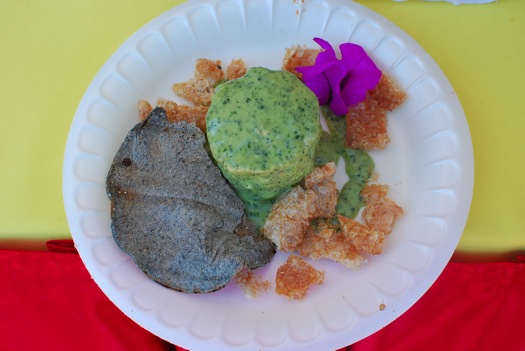
La Diferencia delivered one of the day’s better salads, Ensalada de Nopal with cactus paddles, chicharrones and creamy cilantro avocado dressing on a blue corn tostada.
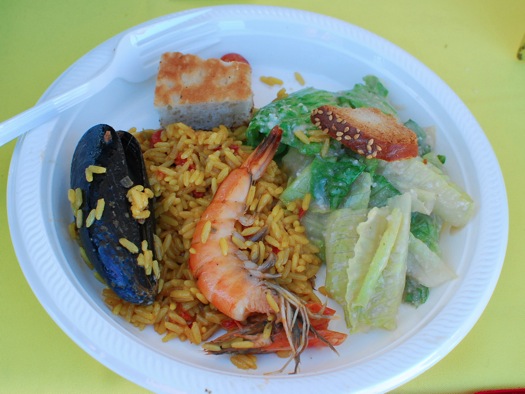
Casa Plascencia wasn’t ready with their paella when we first passed by the booth, but later in the event, they spooned up saffron-tinged rice with calamari, shrimp and mussels.
Tepoznieves offered refreshment in the form of “100% natural ice cream,” a dense but imaginative flavors like sweet-spicy mango chile sorbet with chile lime sauce and Beso de Cencienta, folded with cheese (queso), cream (nata), honey (miel) and strawberry marmalade (mermelada fresa).
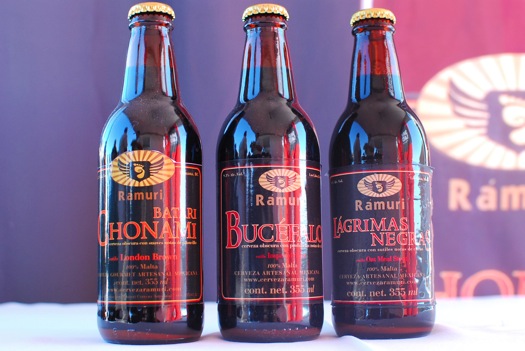
Ramuri caused a mild sensation among the trip’s many food writers. Durango native Sergio Mixhel hired brewmaster Eduardo Silva. For two years, they’ve produced Diablo Blanco premium Mexican lager, Bucefalo Imperial Stout with 14 malts and Oaxaca coffee, Lagrimas Negras with six malts and Pueblan cacao, and Batari Chonami, a London brown ale. Mixhel named the label for the tribe of Ramuri, a mixture of the sons of Raramuri tribe and Spanish, from Chihuahua.
Das Cortez is a Tijuana coffeehouse that opened in August. My pick was a fairly bitter espresso (20 pesos). They also offer lattes, espresso Americano, cappuccino Italiano, mukha, quadratto and espresso macchiato. At the bar, they evidently use Dripper, Chemex, Prensa Italiana, Prensa Francesa and La Pavoni. That’s unexpected range considering my prior Tijuana coffee experiences, though really, it shouldn’t be, as Tijuana regularly surprises.

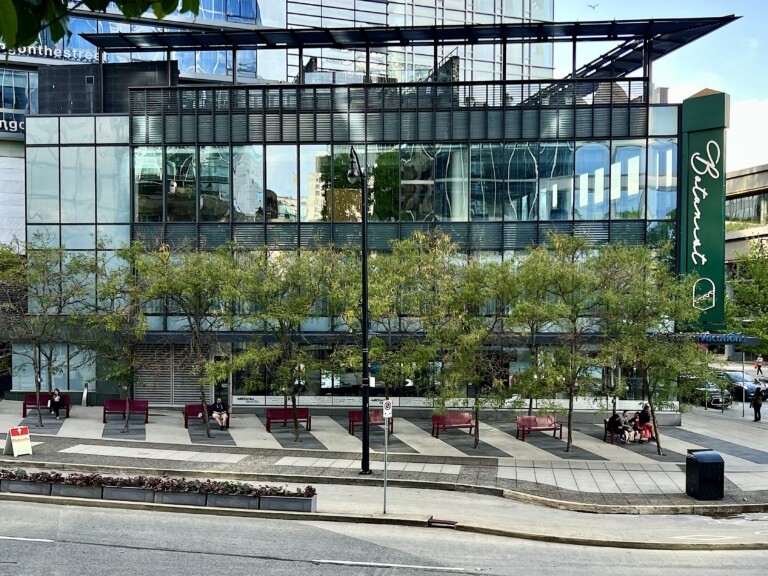
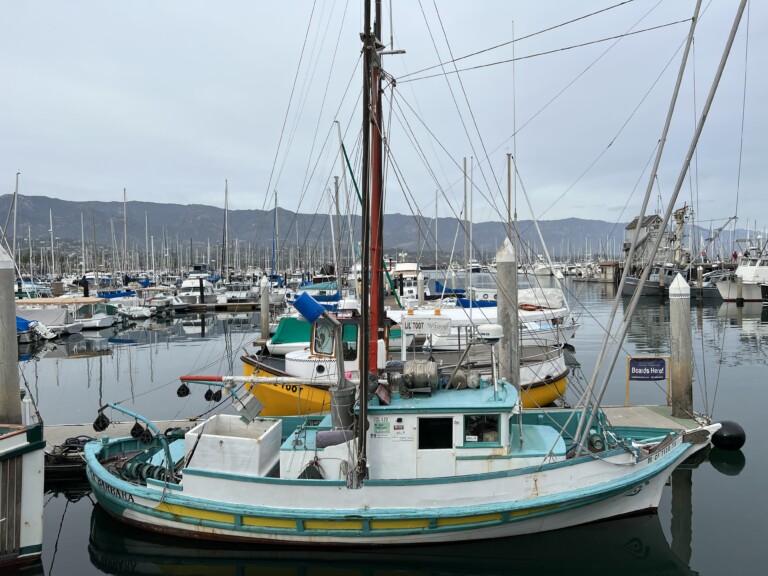





Leave a Comment